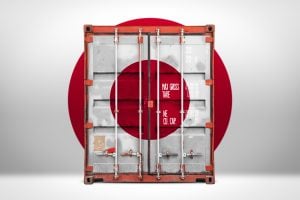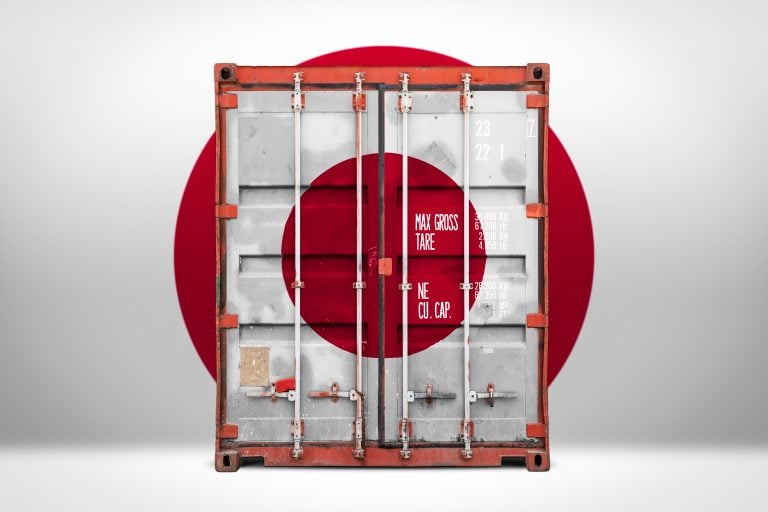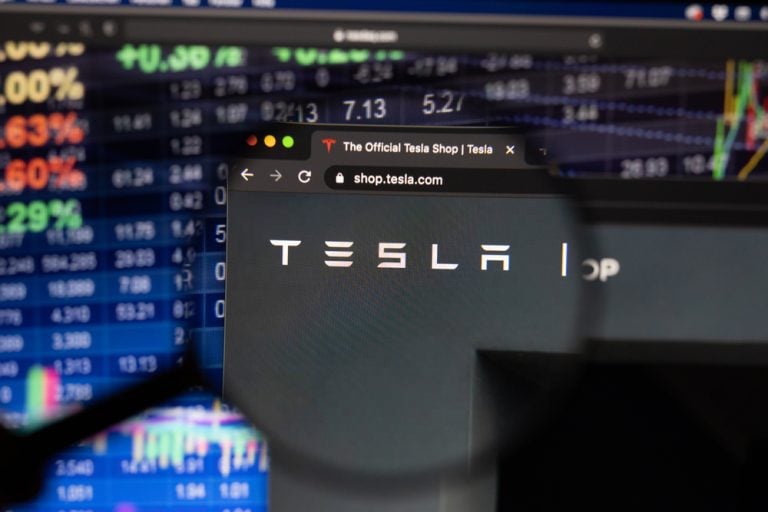A shortage of material and tight spot market has seen uranium prices rise fivefold to US$93.5/lb in the past six years
It has brought a number of hopeful miners out of the woodworks
There is no guarantee they will succeed, but ASX uranium stocks have disclosed plans to bring upwards of 60Mlb of annual U3O8 equivalent supply to market this decade
We profile nine U plays who have set dates to enter the nuclear trade
In spite of a recent stutter, uranium prices have had a rapid rise over the past 12 months, finally breaking out of the Fukushima shaped prison which engulfed the nuclear energy market for over a decade.
From lows of US$18/lb in 2018, prices more than doubled from January 2023 to 2024, hitting a 16-year high of US$107/lb.
Spot levels are more temperate at the moment, having slipped to US$93.50/lb in recent days. The blame has been most squarely placed on funds using the rapid rise in uranium prices to cash out profits, having played a big role in sparking the current uranium bull run by locking up pounds on the spot market previously relied on by utilities to top up their supplies.
That would suggest the lull will be temporary, though anything can of course happen. What is certainly true is the spot price is now well above historic incentive levels of US$60/lb, and even the US$75-80/lb suggested by some miners to be the new incentive price in the wake of recent inflation.
With nuclear power generation on the rise and last year’s decade high contracting of ~160Mlb failing to even hit replacement rates, miners have grown more bullish about their ability to plug new material into the market and develop U3O8 projects.
According to the International Energy Agency, nuclear power generation will reach an all time high in 2025, eclipsing a previous record set in 2021, while more than 20 countries signed a declaration at COP28 last year to triple their nuclear generating capacity by 2050.
Not everyone is a winner
The biggest risk is probably financing and construction of notoriously costly nuclear plants, but it has to be remembered the delivery of new uranium projects will also be a handbrake.
Kazakhstan’s London-listed and state backed Kazatomprom — the world’s largest producer — wants to return to its approved production capacity of 25,000tU, but will fall short over the next two years thanks to sulphuric acid prices and availability.
Canadian giant Cameco wants to return its flagship McArthur River mine in Saskatchewan’s high grade Athabasca Basin to its approved capacity of 25Mlbpa, from around 13.5Mlb last year. Also flagging its intention to develop Tier-2 assets in its portfolio ‘when the time is right’, the news sent shudders through yellowcake investors last month. But it too has fallen short of production forecasts in recent times. McArthur was initially meant to deliver 15Mlb in 2023.
Smaller US players Energy Fuels and Uranium Energy Corp have flagged plans to boost domestic production amid concerns the country’s nuclear power plants are too reliant on material from Putin’s Russia, with local output having tumbled from 44Mlb in 1980 to just 174,000lb in 2019.
While a number of companies are likely to come to market asking for your hard-earned investment dollar, only a handful have demonstrated a credible pathway to production. New miners will face challenges raising finance and finding staff and many still face approval risks with jurisdictions generally unsupportive of uranium mining.
But a number of ASX miners have outlined plans and even put dates on when they think they will be supplying to customers. On the ASX currently only BHP (ASX:BHP), as a by-product of its Olympic Dam copper mine, is actually selling uranium currently but that list is poised to grow.
There is no guarantee they will all get up and less of one that they will succeed and meet expectation set out in their studies.
But ASX listed uranium companies — including and dominated by predominately TSX listed NexGen Energy — are planning to add up to 60Mlb of annual supply to the market in the coming years.
This is our rundown of the ASX uranium companies expecting to pull pounds from the ground in the next few years.
BOSS ENERGY (ASX:BOE)
Mine: Honeymoon
Location: South Australia
Production: Q1, 2024
Type: Restart
Scale: 2.45Mlbpa
Capex: $113 million
All in Sustaining Cost: US$25.62/lb
$2 billion capped Boss is expecting to produce its first drum of yellowcake this quarter from the Honeymoon uranium mine, which has been kicked into action for the first time since it was closed by previous owner UraniumOne in 2013.
Boss MD Duncan Craib, who has become one of the top cheerleaders for Australia’s uranium industry, has left much of its planned product uncontracted, anticipating the sharp rise in spot prices we have seen in recent months.
Also diversifying into the US market via the acquisition of 30% of enCore Energy’s Alta Mesa project and sitting on around $190m of uranium in a stockpiled inventory, Boss is planning to produce an additional 1.5Mlb (100% basis) from Alta Mesa in Texas once it’s up and running.
The mine produced around 5Mlb from 2005-2013 when it shut due to low uranium prices, around the same time as Honeymoon was mothballed on the other side of the world.
Back to Honeymoon, Boss is already flagging the potential to ramp up output to over 3Mlbpa via the development of a satellite deposit called Jason’s, with the $105.4m mine’s life of mine plan based on what Boss says is just 50% of its current JORC resource.
Boss Energy (ASX:BOE) share price today
PALADIN ENERGY (ASX:PDN)
Mine: Langer Heinrich
Location: Namibia
Production: Q2, 2024
Type: Restart
Scale: 6Mlbpa
Capex: US$125m ($191m)
C1 Cost: ~US$30/lb (historical)
Paladin Energy (ASX:PDN) share price today
The largest pure play uranium company on the ASX, $3.6 billion Paladin went to the wall in the last uranium downturn, saved from administration after a DOCA in early 2018.
Back from the dead, PDN is now up over 650% in the past five years, and hit a nadir of just 4c a share in early 2020. It now trades for $1.20.
That’s not to say the rise in uranium prices has made everything smooth-sailing when it comes to the redevelopment of the 75% owned Langer Heinrich in Namibia, one of the world’s largest standalone uranium mines.
Chinese utility CNNC owns the other 25% and an offtake agreement for part of the production from the mine.
Paladin said in its December quarter report in January that the project was 93% complete, but said issues with contractor productivity over Christmas and New Years could delay first production to the second quarter.
It’s also not been immune to cost inflation, with capex rising on previous forecasts from US$118m to US$125m for the restart effort.
PENINSULA ENERGY (ASX:PEN)
Mine: Lance
Location: Wyoming, USA
Production: Q4, 2024
Type: Restart
Scale: 1.8Mlbpa (1.1Mlbpa on opening)
Capex: US$53.4m ($81.5m)
AISC: ~US$42.46/lb
After suffering a false start last year Peninsula Energy appears to be next in line to enter production among the ASX uranium players after the frontrunners in Boss and Paladin.
Having lost access to a resin processing facility owned by Uranium Energy Corp, PEN had to hit the pause button on its Lance development in mid-2023.
A new mine plan was announced last year that would have the in-situ recovery project in Wyoming operational by late 2024.
PEN is planning to first develop the fully licenced Ross resource, planning to extract 4.1Mlb from the estimated resource of 5.9Mlb U3O8. More potential product will be sourced further afield at the 15.9Mlb Kendrick, where amendments have been submitted to add the resource to the mine plan, with another 30Mlb in inferred resources located further south at Barber.
Peninsula believes it will be cash flow positive from 2025, raising $60 million to fund the restart of the mine. In situ leaching last took place at Ross between 2015 and 2019, with recoveries for high pH processing coming in weaker than expected.
It is expected to be the first ISR operation in the US to use low-pH (acid) processing — typically avoided in Wyoming because of the presence of acid-consuming minerals like gypsum and limestone and more commonly used at South Australian mines like Beverley and Honeymoon.
PEN has contracted 6Mlb of yellowcake over Lance’s 10-year life, around a third of its life of mine inventory of 14.8Mlb.
A recently disclosed deal to sell 1.2Mlb over six years from. 2028 to European buyer Synatom was expected to generate gross revenue of US$88-117m over its term, described as being written at terms that were well above planned production costs.
Peninsula Energy (ASX:PEN) share price today
LOTUS RESOURCES (ASX:LOT)
Mine: Kayelekera
Location: Malawi
Production: Q4, 2025
Type: Restart
Scale: 2.4Mlbpa (first seven years)
Capex: US$88m ($135m)
AISC: ~US$37.70/lb
Lotus showed how strong equity market demand was for uranium stocks, raising $30 million at 30c in February at a discount of only 6.5% to its prevailing share price.
Its plan is to bring the Kayelekera mine in Malawi, once owned by Paladin before its sale to the former Hylea Metals in 2019, back into production.
Kayelekera produced more than 10.9Mlb between 2009 and 2014 and includeds a 3Mlb per annum resin in pulp extraction plant, with over US$200m of capex already spent on infrastructure at the site.
In a hint at the parlous state of the uranium industry at the time, Lotus purchased Paladin’s 65% stake for just $4.8m in shares, a 3.5% royalty (capped at $5m) and US$10m to replace the Kayelekera environmental bond.
It issued more shares to up its stake to 85% by exercising an option to buy out a 20% minority stake held by its own director Grant Davey.
Having merged in 2023 with A-Cap Energy to acquire its earlier stage Letlhakane project in Botswana, Lotus now has 241Mlb of resources — claimed by the company as the third largest JORC resource inventory on the ASX.
A DFS in 2022, using US$75/lb uranium prices, suggested Kayelekera could be “one of the lowest capital cost uranium projects globally”.
Lotus Resources (ASX:LOT) share price today
DEEP YELLOW (ASX:DYL)
Mine: Tumas & Mulga Rock
Location: Namibia & WA
Production: 2026 (Tumas) & 2028 (Mulga Rock)
Type: Greenfields
Scale: 3.6Mlbpa (Tumas alone)/7.1Mlbpa (w/Mulga Rock)
Capex: US$360m ($550m) (Tumas)
AISC: US$38.63/lb (with vanadium credits)
Rising uranium prices have sent Deep Yellow’s shares some 32% higher since it announced a merger with Vimy Resources.
It has a 2028 potential start date on Vimy’s Mulga Rock, the only project approved by the pro-uranium Barnett Liberal-National Government in WA before the entry of the anti-uranium McGowan Labor Government in 2017 to beat a five-year substantial commencement deadline set in its environmental approvals.
For Deep Yellow MD and former Paladin Energy boss John Borshoff, Mulga Rock is a down the line prospect.
Its Tumas deposit is the nearer term play, having survived a scare last year when it seemed Namibian authorities may be looking to impose larger domestic ownership requirements that could have spoiled study metrics.
Investors breathed a sigh of relief when it was revealed any future policy changes would not be imposed on existing mining permits.
A review of the Tumas DFS in December, which increased its base case uranium price ‘conservatively’ from US$65/lb to US$75/lb, delivered a 68% lift in NPV to US$570m and IRR of 27%.
An FID is due in the third quarter of this year after financing and detailed engineering is completed.
The study suggests the project could be paid back in 3.16 years, requiring a uranium price of US$48.16/lb to break even, or 2.47 years at prices above US$90/lb.
It is expected to operated for upwards of 22 years, with a DFS on the ~15-year Mulga Rock due to start in the June quarter.
Deep Yellow (ASX:DYL) share price today
NEXGEN ENERGY (ASX:NXG)
Mine: Rook I
Location: Saskatchewan, Canada
Production: Unknown
Type: Greenfields
Scale: 29Mlbpa (first five years)
Capex: US$1.3 billion ($1.98b)
Cost: US$5.69/lb
Described as a ‘geological freak’ by Terra Capital stockpicker Jeremy Bond, dual-listed NexGen was the only miner included in last year’s Sohn Hearts and Minds Investment Conference charity picks.
It’s not hard to see why. The project — a relatively recent high grade discovery in Canada’s vaunted Athabasca Basin — carries a massive capital bill of well over US$1 billion.
But it makes up for those up-front costs with a leading operating cost position of just US$5.69/lb, low enough theoretically to spit out cash even if uranium prices were to fall to cyclical lows of beneath US$18/lb last seen six years back.
Rook I and its flagship Arrow deposit received full provincial environmental approval from the government of Saskatchewan in November last year, becoming the first greenfields development to reach that milestone in over 20 years at the time.
While it has an initial mine life of just 11 years, Rook I will, for the first five years of its short life at least, be a genuine Tier-1 development, though first production remains up in the air.
At 29Mlbs, the mine will deliver close to 1/6th of the annual requirements of the world’s current nuclear fleet.
Bond told us last year that at spot prices seen in January Rook I could be printing as much free cash as legacy US copper producer Freeport McMoran.
“It’s one of the best undeveloped assets of any kind in the commodity market,” Bond said in November.
“If you put a gold equivalent and a copper equivalent on it, it’s a geological freak.
“At US$100/lb it’s doing free cash flow of a billion and a half US, which is the same free cash flow that, say, Freeport did.
“Freeport’s capped at US$60b, so call it C$90b, NexGen is C$4.5b.
“Admittedly it’s not in production, so it’s not like for like but even more interesting is that Freeport free cash flow comes off 22 assets, whereas this could come from one. So it really is quite a unique asset.”
NexGen Energy (ASX:NXG) share price today
BANNERMAN ENERGY (ASX:BMN)
Mine: Etango
Location: Namibia
Production: Late 2026
Type: Greenfields
Scale: 3.5Mlbpa
Capex: US$317m ($484m)
AISC: US$38.10/lb
Led by executive chairman Brandon Munro, Bannerman has long been plugged into the broader nuclear outlook through Munro’s role as co-chair of the World Nuclear Association’s nuclear fuel demand working group.
BMN has held onto its Etango project in Namibia throughout the post-Fukushima downturn, sliding into the ASX 300 index in the March update alongside fellow yellowcake hopefuls NexGen and Lotus Resources.
It announced the completion of permitting for Etango in December with the grant of its mining licence, which coincided with the award of early works contracts on an access road and temporary water pipeline.
Front end engineering design has kicked off, updating numbers last presented in a DFS in December 2022.
That study incorporated a 15% lift in capex, with an NPV of US$209 million and IRR of 17% at base case pricing of US$65/lb.
More optimistic spot prices of US$80/lb — now surpassed — would deliver a NPV of US$436m and 25% IRR.
Described as a ‘top 10’ uranium development resource, Etango-8 contains 113.5Mt of ore at 240ppmn U3O8 for 59.9Mlbs, which will be mined for an initial 15 years at a rate of 8Mtpa.
But if prices continue to skew to the upside, Bannerman has reviewed the potential to increase that processing capacity 2.5x over to 20Mtpa.
Bannerman Energy (ASX:BMN) share price today
AURA ENERGY (ASX:AEE)
Mine: Tiris
Location: Mauritania
Production: 2026
Type: Greenfields
Scale: 2Mlbpa
Capex: US$230m ($352m)
AISC: US$34.77/lb
Aura received a shot in the arm last month when Sweden’s conservative coalition announced an inquiry that could lead to the end of a ban on uranium mining.
Uranium is a major by-product of future vanadium mining at Aura’s Haggan project, with the company claiming being able to realise value from its ~800Mlb U3O8 resource that could add 14% to its revenues.
Alternatively, the company would need stronger vanadium and base metal prices to get the mine over the line as it would be storing theoretically valuable uranium as waste.
“Releasing the value of uranium within the Häggån Project has a significantly positive economic impact on an already robust project,” Aura CEO Andrew Grove said in a statement on the news of the inquiry.
At the same time, Aura has floated the prospect of developing the Tiris project in Mauritania — Africa’s second largest iron ore producer.
A FEED study completed at a uranium price of US$80/lb suggested the project could produce 1.9Mlbpa over a 17-year mine life at an all in sustaining cost of US$34.5/lb, with a final investment decision due in late 2024.
Based on a capital cost of US$230m, Aura suggests it can bring the operation to life within 18 months of an FID, with expansion potential to move beyond 2Mlbpa. Additional exploration drilling is also ongoing for the $133 million capped explorer.
“The FEED study clearly demonstrates that Tiris will be a low-cost, high value, near-term uranium producer with the ability to scale in a very strong uranium market,” Grove told the market.
“The market is in structural deficit and likely to continue that way for an extended period. The strong economics at Tiris are supported by the simple, low risk mining and beneficiation that delivers the high-grade, 1,750ppm to 2,000ppm U3O8, ore to the leach plant and there are no requirements for crushing or grinding the ore.
“These high grades (NB: around 0.2% U3O8) are only matched by the deep underground mines in Canada and exceeding any current or proposed open pit uranium mines worldwide.”
Shallow uranium mines in Africa commonly operate at 500ppm and below.
Aura Energy (ASX:AEE)
SILEX SYSTEMS (ASX:SLX)
Mine: Paducah
Location: USA
Production: 2028
Type: Brownfields
Scale: 5Mlbpa
Capex: Unknown
AISC: Silex Systems (ASX:SLX) share price today
At Stockhead, we tell it like it is. While Aura Energy was a Stockhead advertiser at the time of writing, it did not pay for this article.
The post Which ASX uranium stocks are in the development pipeline? appeared first on Stockhead.




















